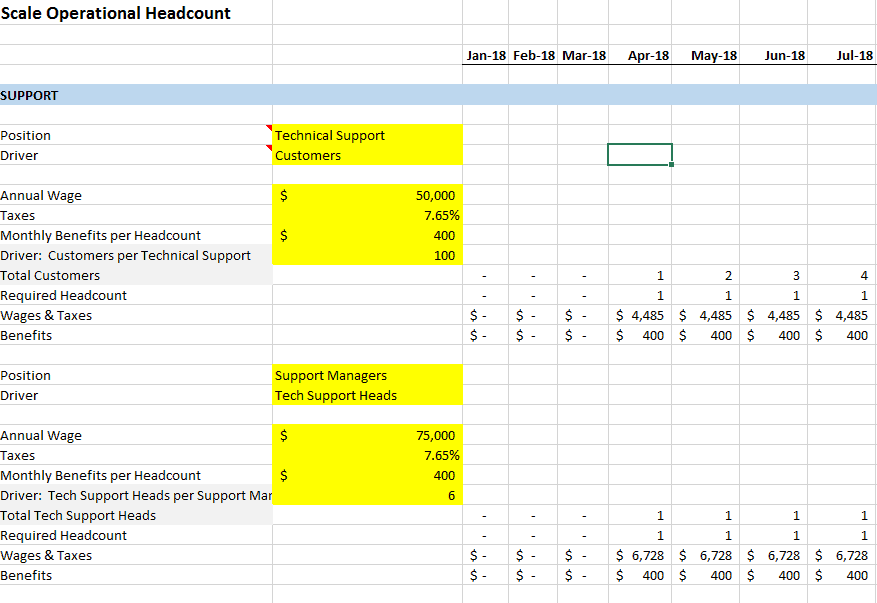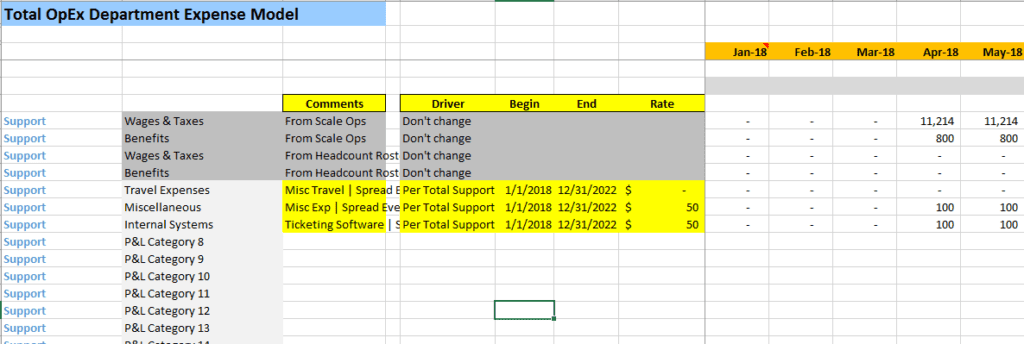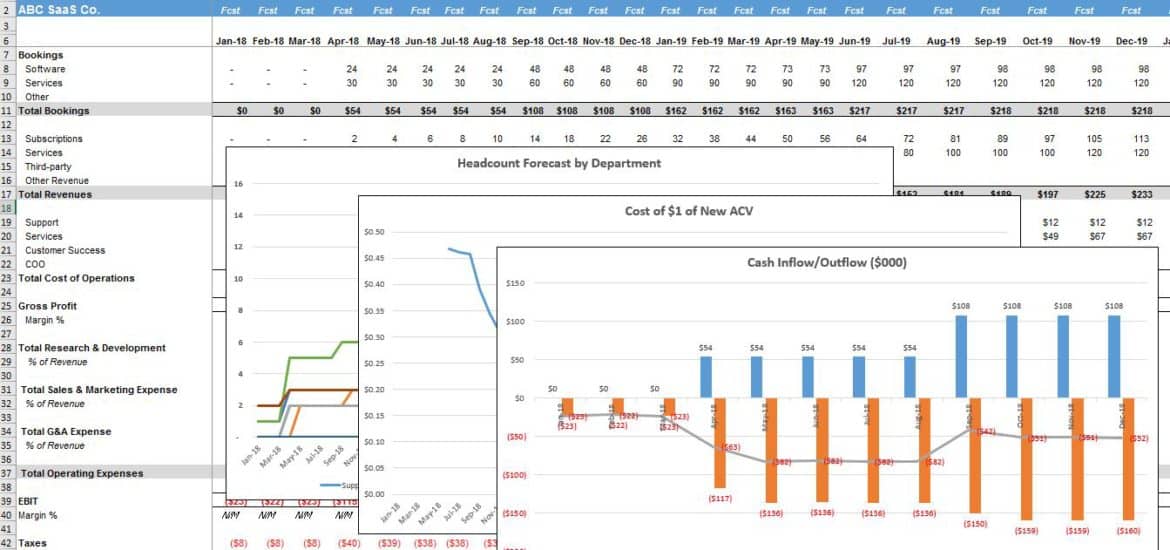Five Year Financial Projection Template – Solving My Pain
Creating a five-year financial projection or any long-term financial forecast greater than two years is a time intensive effort. You need to add X number of managers per staff, you need enough sales reps to support bookings, you need more technical support specialists as your customer base grows, etc. You can download my Five Year Financial Projection Template below.
It goes on and on and on. Hours later, you are pulling out your hair out and squinting even harder at your computer screen.
Even if you are a finance pro, modeling the hundreds of different revenue and expense assumptions becomes very tedious, very fast.
Download the model below.
The Idea – Scale Headcount Automatically
After thousands of downloads of my free SaaS Financial Plan and my own hours spent creating long-term financial projections, I decided to create a forecast model that will help SaaS founders and finance professionals save hours and hours of Excel modeling time.
This Excel model is built upon my existing SaaS Financial Plan, but it differs in one key way. It has one tab dedicated to automatically scaling a majority of your headcount expenses.
It scales headcount based on specific revenue, headcount or expense drivers. In the next few paragraphs, I will highlight the major sections of the forecast model.
New Tab – Scale Ops
This is a new tab and does the heavy lifting for you when forecasting new headcount, wages, taxes, benefits, etc. In this tab, you drive headcount for Support, Services, Customer Success, R&D, Sales, Marketing, and G&A. An example section from the new tab is below.

Some departments are very easy to scale like Services or Support while some are little more difficult to drive by metrics such as R&D. For example, you should drive R&D by your product road map, but in this model, I drive by ARR to scale R&D with the size of your company. I know, not perfect, but you can always override this.
Bottoms Up Approach to Headcount Forecasting
The Excel model builds headcount from the entry-level position and then up the chain. For example, a technical support analyst is required first and then managers are hired based on specified volumes of analyst positions.
Yes, sometimes you first hire in the VP of that department and then scale the staff in that department, but model-wise, it was easier and a more logical progression to start at the staff level and then build from there. You can always adjust as needed.
Headcount Roster Tab
Of course, you can always add headcount “manually” via the Headcount Roster tab. In this example, I am starting with four founders and then let the model build the rest of the team from there.
If you are making key hires that won’t be captured by the “Scale” tab, you can enter the individual heads on this tab.

Total Operating Expenses Tab
All wage data from the Headcount Roster and Scale tabs flow into the “Total OpEx” tab. You’ll notice grey rows in each department’s forecast area. Do not modify the rows in grey as they pull in the wage data from the headcount tabs.
Below the grey rows, you are free to enter your department’s forecast as usual. I get you started with some miscellaneous expense drivers to help fill in customary expenses such as internal-use software, travel, and miscellaneous costs.
Add expenses to each department’s expense forecast as necessary.

Conclusion
The Five Year Financial Projection template is a new forecast model, so please let me know if any of the formulas “blow up.” I’ll fix them and continue to release new versions. I really believe this model will save you tremendous amounts of time or you may incorporate some of the logic into your existing financial forecast models.
Download button below. I’m using a new plugin to manage the download process, so let me know if you experience any issues.
The download is free, and you will receive an email with a link to download the model.
UPDATE: Just added the ability to add historical data to your forecast.
Want all of my models? Download 20+ models with here.
I have worked in finance and accounting for 25+ years. I’ve been a SaaS CFO for 9+ years and began my career in the FP&A function. I hold an active Tennessee CPA license and earned my undergraduate degree from the University of Colorado at Boulder and MBA from the University of Iowa. I offer coaching, fractional CFO services, and SaaS finance courses.

Lol that was very nice. There is this institution asking for 5 years projection its really difficult to imagine. But i thank you i got a good start from here
Why are there different revenue tabs ? I understnad splitting the cohorts from SME to enterprise but 3 of the revenue tabs seem to address the same cohort?
Hi Kaneda,
There are different revenue tabs in case you have multiple product lines. And some tabs have different logic to address enterprise or SMB style forecasting.
Ben